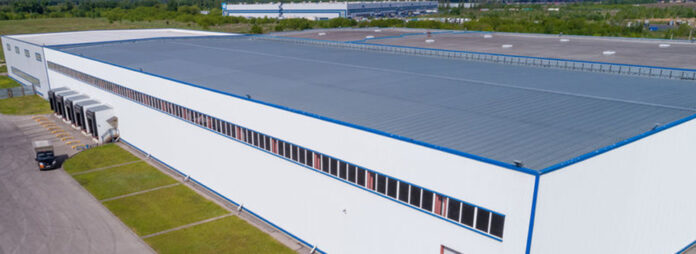A warehouse is a building for storing goods for stocking purposes. The goods that leave the factory undergo processes like packaging before they can be docked for shipping or loaded onto trains or trucks before they can reach the market for the final consumer.
The main ingredient of a traditional warehouse consists of cement, stone chips, and other products that would make the warehouse vulnerable to damage by the forces of erosion like rain or snow. Nowadays, companies prefer to have a prefab steel structure for the erection of a warehouse building, due to its desirable qualities like high durability, high tensile strength, and cost-effectiveness.
Prefabricated steel warehouses consist of small steel-made units that need re-assembling on-site to construct warehouses with minimum hassle and in less time.
Key Factors That Make Prefab Steel Warehouses A Good Idea
Prefab Steel Warehouses Are Highly Durable
Prefabricated steel warehouses have high durability, unlike cement warehouses. As these warehouses consist of steel, they can easily withstand hail or heavy rainfall. Also, given their high durability, they last long, and the owners need not worry about replacement or warehouse maintenance charges once they invest in a steel warehouse.
Prefab Steel Warehouses Allow For Easy Customization
Building a warehouse can be a big investment decision for a business, a condition that requires that a warehouse building should be such that it allows for easy customization. After some years of usage, the owners might want to make some changes to the basic design of a warehouse. They might want to increase the area or the height of the warehouse. If such changes impose a burdensome cost on the owners, it becomes a restraint on business expansion activities.
Prefab steel warehouses can be a good investment in such cases. Since these units are prefabricated, one can customize them at will. Increasing the area or the height would require making minimal adjustments like taking measurements and readjusting the load-bearing ability of the beams instead of breaking up the whole construction.
Steel Warehouses Come At A Lower Cost
Steel warehouses are cheaper to build than their traditional counterparts. A large amount is saved in labor costs when prefab units are constructed instead of cement warehouses, which require days of masonry work. Thus, prefab steel buildings, being less costly, cut back the capital expenditure of a business, which in turn can be invested elsewhere for other business expansion activities.
Prefab Steel Warehouses Are Environmentally Sustainable
Prefab steel buildings are environmentally friendly. The material used for construction is recycled sleet. Thus constructing a new warehouse reuses steel scrap generated from the dismantling of earlier warehouses, damaged vehicles, etc., rather than extracting new natural resources and creating new waste products.
Steel Warehouses Are Disaster Resistant
A typical warehouse remains functional for quite a long time. One can expect that in its lifetime a warehouse will have to bear the impact of disasters like a pest infestation, a fire outbreak, or even an earthquake.
Steel is resistant to pests compared to cement and makes steel warehouses capable of protecting food crops from a pest infestation. Steel is also resistant to fire and earthquakes. In fact, if a part of a prefab steel warehouse gets destroyed in an earthquake, it can urgently be rebuilt quite fast. Such quick rebuilding is quite unlikely in the case of traditional warehouses that leave a mound of gravel, cement, or stone after an earthquake.
Final Words
Prefab steel warehouses offer conveniences such as high tensile strength, high durability, easy customization, and sustainable construction. Since prefab steel offers such advantages, it is fast becoming the preferred option for businesses around the globe.

